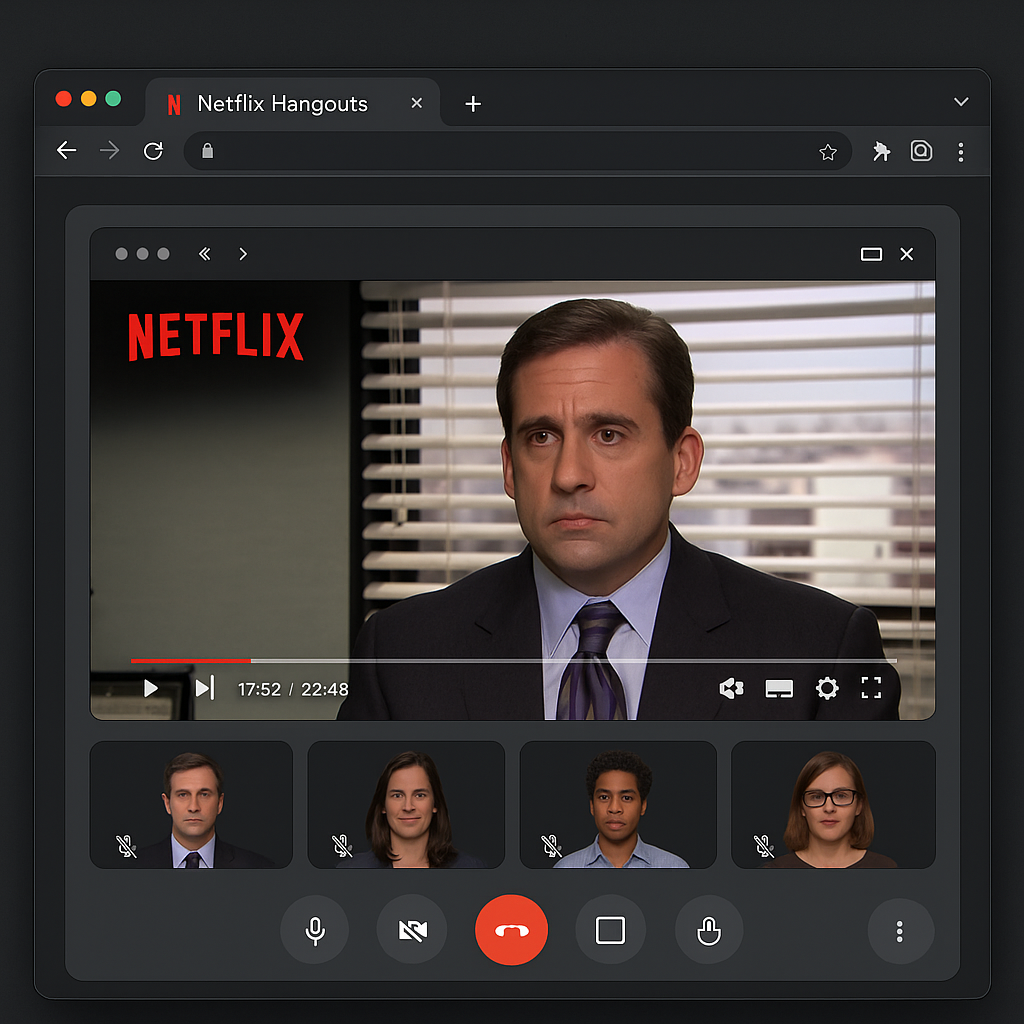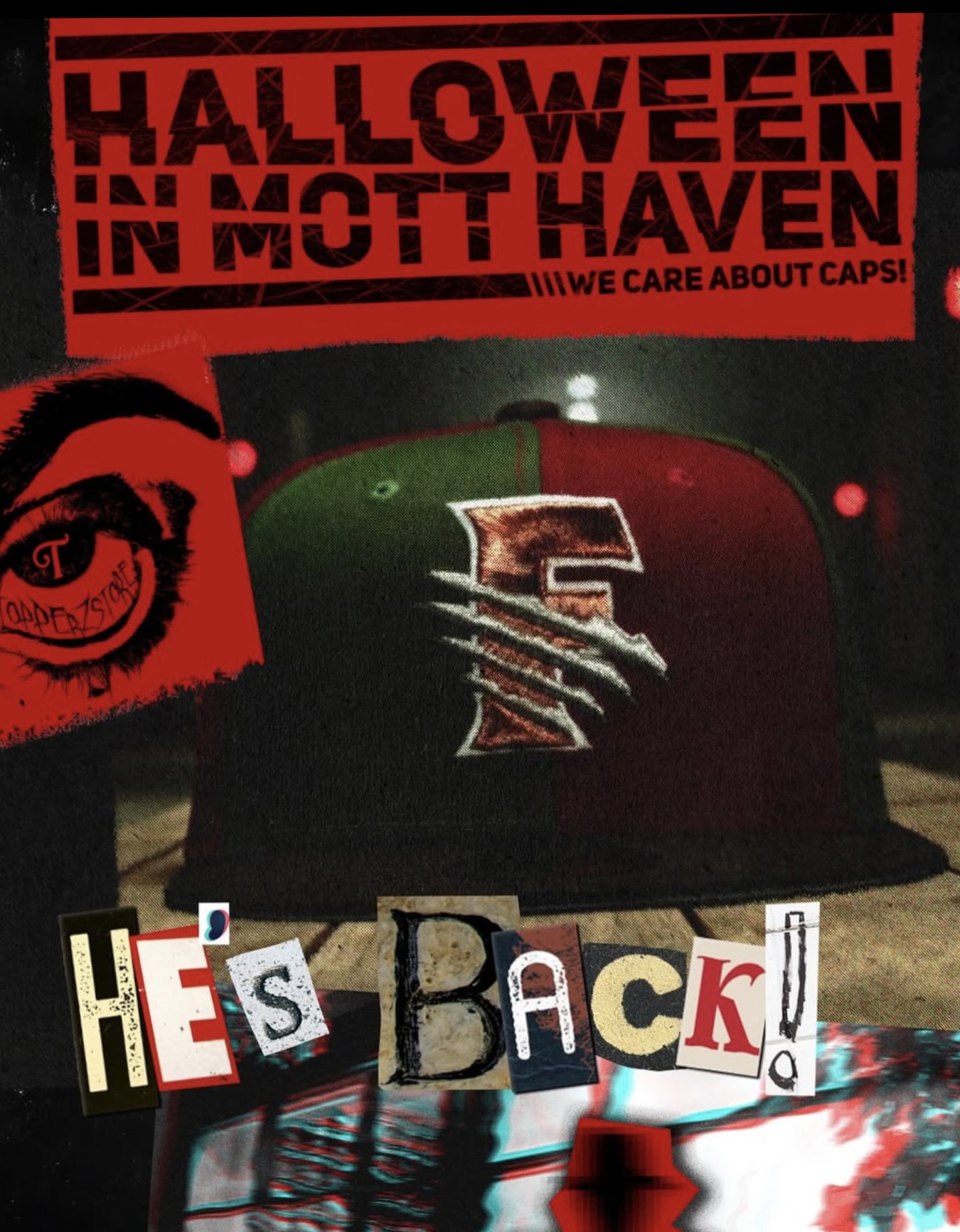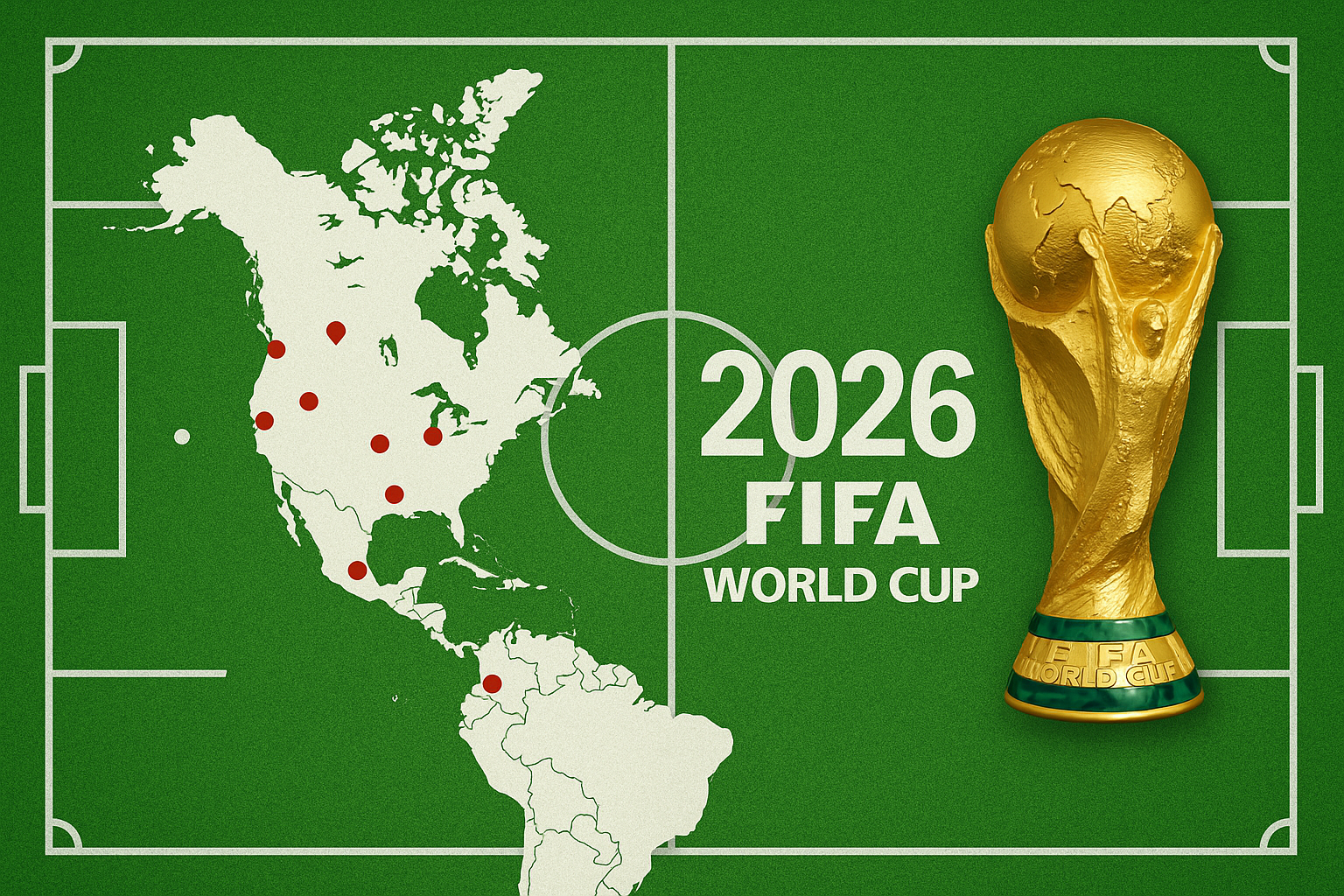the internet’s favorite office prank
Some ideas spread online not because they’re real, but because they feel too real not to be true. “Netflix Hangouts” was one of those. The phrase first surfaced in viral posts suggesting there was a Chrome extension that could make your Netflix screen look like a Zoom or Google Meet window. The joke? You could “watch Netflix at work” while appearing to be in a meeting.
The meme was a hit because it tapped into something instantly relatable — the weary office worker, camera on, pretending to focus, eyes glazed from too many virtual meetings. Whether or not the extension existed didn’t matter. What mattered was how perfectly it described modern office absurdity: the need to appear busy while craving escape.
The genius of “Netflix Hangouts” wasn’t in its supposed functionality but in its cultural resonance. It stood at the intersection of humor and critique — a parody of corporate productivity culture disguised as a digital hack.
remote work and the illusion of presence
The rise of remote work brought flexibility but also created new kinds of surveillance. Employees learned to master the art of being seen online. “Active” lights on Slack, “available” statuses on Teams, and constant video calls blurred the line between visibility and productivity.
Within that context, the “Netflix Hangouts” meme hit a nerve. It asked — half-jokingly, half-accusingly — either digital presence actually meant anything. Could a worker sitting silently in a fake meeting be any less productive than one numbed by yet another PowerPoint presentation?
This joke extension symbolized a collective rebellion against the over-visual culture of work-from-home. It reflected the exhaustion of constant observation, the fatigue of pretending engagement, and the absurd reality that attention — not output — had become the currency of the modern office.
the workplace as theater
Sociologists have long observed that work often resembles a stage. In offices and Zoom calls alike, employees perform productivity — juggling tabs, maintaining posture, nodding at the right time. The “Netflix Hangouts” concept leaned directly into this theatrical metaphor.
Imagine an employee, camera on, window split between a fake “conference call” and a hidden movie stream. The juxtaposition is almost poetic — the simultaneous need to appear composed while quietly seeking comfort.
In that sense, “Netflix Hangouts” exposed the performative nature of white-collar labor. Just as social media users curate their lives online, workers now curate their digital presence — a phenomenon some have called “productivity cosplay.” We perform efficiency, polish, and energy, often at the expense of our own attention.
The meme worked because it wasn’t about laziness — it was about exhaustion. It gave a name to a cultural condition that was already there: workers pretending to be fine, pretending to be focused, while quietly drifting toward escapism.
the satire of productivity apps
The digital economy is saturated with apps promising focus and efficiency. Time trackers, browser blockers, mindfulness reminders — all exist to keep us “on task.” The parody of “Netflix Hangouts” flipped that script. Instead of enhancing productivity, it pretended to disguise distraction as work.
It was a satirical mirror held up to Silicon Valley’s obsession with optimization. Every year brings new productivity tools, yet burnout rates keep rising. The fake extension captured that irony perfectly — the idea that the next app might not save us from distraction but could make our distractions smarter, slicker, and easier to hide.
It’s also worth noting that real Chrome extensions with similar vibes do exist — not for streaming, but for privacy. Some extensions can hide tabs, blur content, or replace windows with fake work dashboards. “Netflix Hangouts” exaggerated this reality until it became comedy. But like all good satire, it made the truth visible: we are overwhelmed, surveilled, and desperate for moments of relief.
culture
Distraction has become a defining emotion of the 21st-century worker. The same devices that connect us to our jobs also connect us to endless entertainment. During the pandemic years, Netflix became a second screen to many people’s lives — a comforting rhythm in the background of chaos.
In this sense, “Netflix Hangouts” wasn’t about rebellion. It was about self-preservation. It reflected a generation of workers trying to reclaim fragments of rest in an always-on digital ecosystem. A muted tab of The Office or BoJack Horseman during a slow afternoon became not an act of defiance, but one of survival.
This shift — from guilt to justification — marked a deeper cultural evolution. The workforce, especially Gen Z and Millennials, no longer sees distraction as moral failure but as a coping mechanism. “Netflix Hangouts” didn’t encourage laziness; it dramatized the reality that rest must often be disguised as productivity in systems that punish slowness.
meme as social critique
Like most viral internet phenomena, “Netflix Hangouts” thrived on ambiguity. It was funny because it sounded real. It was believable because the culture made it believable. The meme itself became a quiet critique of the corporate world’s contradictions.
In a workplace that glorifies “hustle culture” while eroding boundaries, the idea of disguising leisure as labor feels both absurd and necessary. It’s a sly protest — not by walking out, but by watching Bridgerton in a browser that looks like Zoom.
Memes like this thrive because they use humor as armor. They allow people to laugh at systemic issues — overwork, digital fatigue, artificial visibility — without confronting them head-on. A shared laugh becomes a moment of recognition: we’re all pretending.
the evolution of office rebellion
The office prank has evolved. Where once rebellion meant long coffee breaks or “accidentally” printing memes on the work photocopier, now it’s about finding loopholes in the digital workspace. The fake extension idea fit perfectly into this lineage of playful defiance.
There’s something deeply human in that mischief — the desire to reclaim control, even symbolically, from systems that measure every click. “Netflix Hangouts” captured that instinct beautifully. It wasn’t about undermining work; it was about preserving humanity within it.
Even its aesthetic — the clean overlay of a fake Google Meet screen with muted cameras and pixelated faces — evoked the sterile blandness of real meetings. It made the absurd visible: how easy it would be to replace one monotony (the meeting) with another (a binge session).
why it resonated with gen z
For younger workers, especially Gen Z entering corporate environments post-pandemic, humor is a form of resistance. They’ve grown up immersed in memes, fluent in irony, and skeptical of traditional hierarchies. “Netflix Hangouts” spoke to that ethos — a wink at a system they never fully bought into.
It also reflected Gen Z’s evolving relationship with work-life balance. Unlike their predecessors, they’re less willing to sacrifice well-being for corporate loyalty. The idea of sneaking Netflix during a meeting wasn’t rebellion — it was boundary-setting, a coltish way to say: we deserve breaks.
This generation also values authenticity. The meme resonated because it blurred lines between the formal and informal, work and leisure — just as Gen Z blurs those boundaries daily in remote work, side hustles, and digital identities.
humor, burnout, and the need to disconnect
“Netflix Hangouts” landed in a cultural moment defined by burnout. By 2025, digital fatigue had become chronic. Zoom calls, Slack threads, and endless notifications left workers overstimulated and under-inspired. The idea of watching Netflix at work was less about slacking off and more about finding stillness in overstimulation.
Humor became a collective therapy. Sharing the meme was a small act of community — a way to say, “I feel it too.” It transformed exhaustion into laughter, turning powerlessness into play.
This is why cultural memes matter. They archive emotional history. “Netflix Hangouts” might never have existed as software, but it documented a mood — a moment in time when workers, caught between endless tasks and endless tabs, fantasized about freedom through the familiar comfort of streaming.
from fantasy to commentary
Even though no official extension was ever released, the rumor of “Netflix Hangouts” lives on. It pops up on Reddit threads, TikToks, and Twitter reposts every few months, often revived by someone rediscovering the joke.
Each time, it reopens the same conversation about digital labor: Are we truly working smarter, or just pretending better? What does productivity mean in a system where presence matters more than performance?
These aren’t small questions — they touch on the midst of modern capitalism’s relationship with time, attention, and authenticity. The joke is simple, but its implications are profound: if we can fake work so convincingly, maybe the entire structure of “work” deserves rethinking.
flow
In the end, “Netflix Hangouts” stands as one of the great modern office myths — a parody so convincing it became a cultural truth. It exposed how the tools built to connect us can also alienate us, how productivity culture breeds absurdity, and how humor can momentarily set us free.
It’s not about streaming shows on the job; it’s about the desire to reclaim autonomy in environments that measure productivity by motion. The meme lives because the problem it jokes about still exists.
Either you’re a remote worker toggling between tabs or an office employee counting minutes to five o’clock, the fantasy of “Netflix Hangouts” whispers the same message: everyone’s tired of pretending.
No comments yet.








